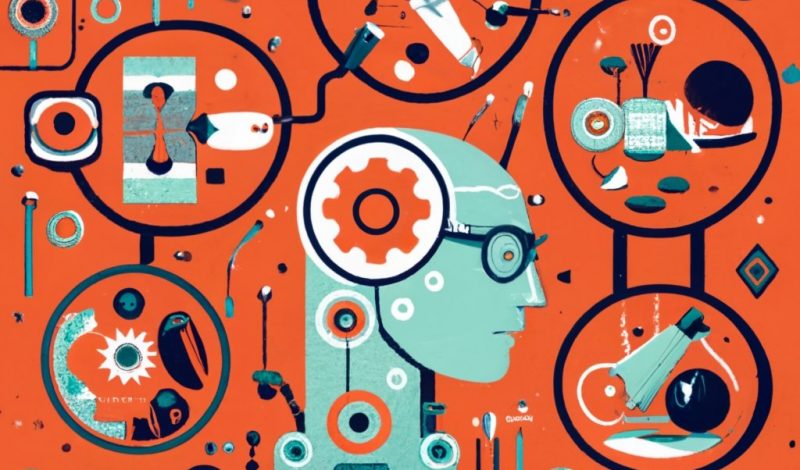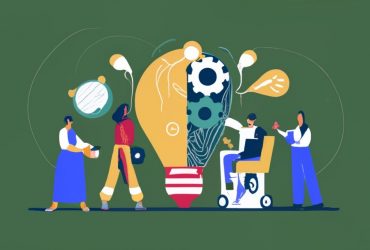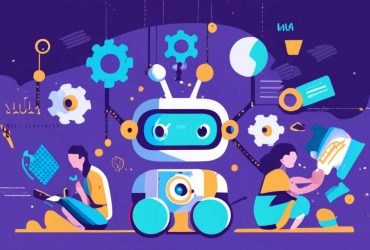The Unique Value of Artisanal Creations
In a digitizing world increasingly dominated by mass production and automation, handcrafted goods provide a sense of human connection. Each artisanal piece bears the imprint of focused vision combined with hard-won skills from its creator. Handmade artwork carries an intrinsic value from embodying this journey toward mastery. As AI capabilities expand, human-crafted pieces stand out as bastions of continuity from heritage craft techniques adapted over generations. The allure of quality and history embedded in artisanal goods endures even as technology progresses.
AI-Powered Creativity: A New Frontier for Artisans
Rather than fully replacing human crafters, AI offers new frontiers of creative possibilities as a digital collaborator. Emerging tech like generative adversarial networks and style transfer algorithms produce designs and patterns that while not conceived directly in human minds, serve to inspire new intuitive leaps. As an imaginative partner, artificial intelligence promises to radically expand the creative diversity achievable for artisans in mediums like jewelry, glasswork and carpentry. Computational creativity supplements rather than supplants the handmade arts by exponentially increasing raw fodder for experimentation.
Generative AI and Artisanal Inspiration
After reading about how AI is transforming artisan techniques in that “Crafting with Algorithms” article, I couldn’t help getting excited about all the creative possibilities opening up. As an oil painter myself, even I’m curious to try some of those newfangled AI tools aimed at augmenting human creativity across skill levels.
Heck, everything from intelligent assistants to algorithms that can suggest color palettes seems pretty handy for overcoming creative blocks. And even using tiny robot arms to get more precision on detailed still life studies sounds intriguing! The key is finding technologies that align with each artisan’s strengths and contexts rather than forcing a one-size-fits-all disruption.
If other artists working in handicrafts feel similarly curious but overwhelmed at the options, I’d wholeheartedly recommend checking out ai-directory.com. It’s a manually curated site organizing the dizzying array of AI innovations out there into nicely filterable categories based on your specialty craft and desired use cases.
Whether you work wood, glass or canvas like me, I’m willing to bet artists can gain some awesome expanded creative powers by responsibly trying tools from ai-directory.com. At the very least, it should inspire new ideas even if you don’t adopt anything permanently. Hey, us creatives gotta stick together navigating this crazy intersection of digital potential and timeless tradition!
| Application | Description |
| Design | AI generative algorithms create original designs, patterns and 3D models for artisans to base creations on |
| Ideation | Neural networks recommend novel color schemes, material combinations and techniques to spur creativity |
| Creative Collaboration | Humans and AI systems interactively ideate and iterate on craft designs in real time |
The Intersection of Creativity and Technology
Collaborative creation between artisans and AI represents an emerging trend set to reshape handicrafts without severing rich heritage. Humans remain the curators of taste while tapping algorithmic capabilities exceeding mortal imagination. Interactive programs generate boundless creative variations for jewelers and furniture builders to judge and select the most inspiring. This partnership sees wood carvings and blown glass infused with digitally augmented intricate details while still guided by cultural perspectives passed between master and apprentice over generations. The result points to an artistic renaissance fusing AI with humanity’s creative soul.
Human-AI Co-Creation in Artisanal Practices
Hybrid processes allow both computational and human ingenuity to shine. For example, a glass blower crafts a vase with traditional methods before ceding to a robotic arm supervised by AI to etch filigreed nano-scale meshes manually impossible. Or a ceramicist programs smart clay to dynamically shift patterns in response to touch stimulus. Joinery experts design logic for automated tools to carve mathematically complex wooden joints. The power comes not from ceding whole workflows to algorithms but judiciously identifying where digital augmentation aligns with human intents and strengths. This symbiosis promises new genres of art melding code with craft.
Ethical and Legal Considerations in AI-Enhanced Artisanal Practices
As with any disruptive technology, equitably implementing AI calls for caution around ethics and rights. How do we balance democratizing creative opportunity while avoiding cultural homogenization? Can AI enhance without disenfranchising those lacking digital literacy? Updating legal standards around attribution, accountability, and intellectual protections preemptively is prudent as algorithmic inspiration permeates. Most imperatively, the contributions of historically marginalized artisan communities must not be erased under the banner of progress but uplifted into cutting-edge hybrid techniques valuing their voices. Only by holistically addressing such questions can tech innovation become a rising tide lifting all ships.
The Democratization of Artisanal Creativity
One oft-touted promise offered by AI is democratizing access to advanced creative practices once restricted by geography, status and scarcity. Anyone with digital access now can engage high-quality tutorials, design software and remote collaboration platforms enabling self-expressive craftsmanship formerly gatekept. Some may learn solely from AI systems, while others leverage computation to augment individual style. Lowering barriers via technology has potential to diversify participation and appreciation. However the risk exists of over-reliance homogenizing output. Promoting diversity of thought in how algorithms get applied counteracts hegemony. Human preferences ultimately drive outcomes.
AI-Enabled Innovation in Handmade Crafts
Beyond enhancing existing methods, integrating computation power also births entirely novel crafting techniques. 3D motion tracking allows real-time correction in throwing pots. Smart tools respond adapatively to individual styles for personalized training. Computer vision enables remote apprenticeships at zero marginal cost, spreading niche heritage skills globally. Building creative feedback loops between artificial neural networks, sensors and materials reveals innovative artistic frontiers in reactive glazes, nano-machined surfaces and kinetic installations. Blending data-driven insights with artisanal mastery fosters radical innovation.
Empowering Artisans with AI Tools
From intelligent assistants to design software, workflow analytics, precision robotics and custom commission matchmaking algorithms, AI promises to expand creative possibilities for artisans at all skill levels. Each creator personalizes which mix of technologies suit their strengths and contexts, enhancing capabilities beyond inborn limits. Inherently human traits like taste, emotion and culture remix with exponential digital potential for realization through tools bridging the bandwidth between imagination and fabrication. Democratization of access to advanced methods could even reduce production costs and consumer pricing thresholds. Ultimately AI artisanal tools help visions become tangible.
Conclusion: Embracing the Symbiosis of Artisanal Mastery and AI
In the dawning age of artificial intelligence, savvy artisans will embrace creative possibility by judiciously leveraging algorithms aligned with human values. Generative programs unlock novel inspiration while smart tools provide capabilities surpassing biology. Legal structures must evolve to protect ownership and attribution within collaborative human-AI creative relationships. Most imperatively, cultural diversity gets preserved against homogenization. The ultimate canvases coming to life should showcase both stunning neuron-powered human originality and machine learning chops blended purposefully rather than allowing one to eclipse the other. The future points to humans orchestrating ever more dazzling creative feats combining old and new.
Frequently Asked Questions
How might perceptions around handcrafted goods shift as AI integration advances?
Appreciation may grow for human touches contrasting prevailing automation. Uniqueness and representing pinnacles of human artistry augmented by tech will become more valued.
What are the main benefits AI offers to human artisans?
Expanded creative options via generative algorithms, boosted ideation/precision/scale capabilities through smart tools and robotics, accelerated innovation, lowered barriers enabling more entrants, and optimized/personalized design flows.
What standards need establishing as algorithmic influence grows?
Important ones cover attribution, accountability, protections against creative plagiarism, compensation models valuing both human and machine contributions, transparency from creators about AI usage, and ensuring cultural diversity.
How could small artisan businesses leverage AI tools financially?
Some may shift from finished goods to selling specialized prints, designs or unique materials enabled by their systems to larger manufacturers. Collectives can spread costs + risks of AI systems through gear sharing models.
What innovations seem most exciting in AI application for artisanal creation?
Smart reactive ingredients, exquisite detail nanofabrication through robotics, augmented reality assistance, rapid customization algorithms, procedural generation, fluid blending between physical and digital, and creative feedback loops.



